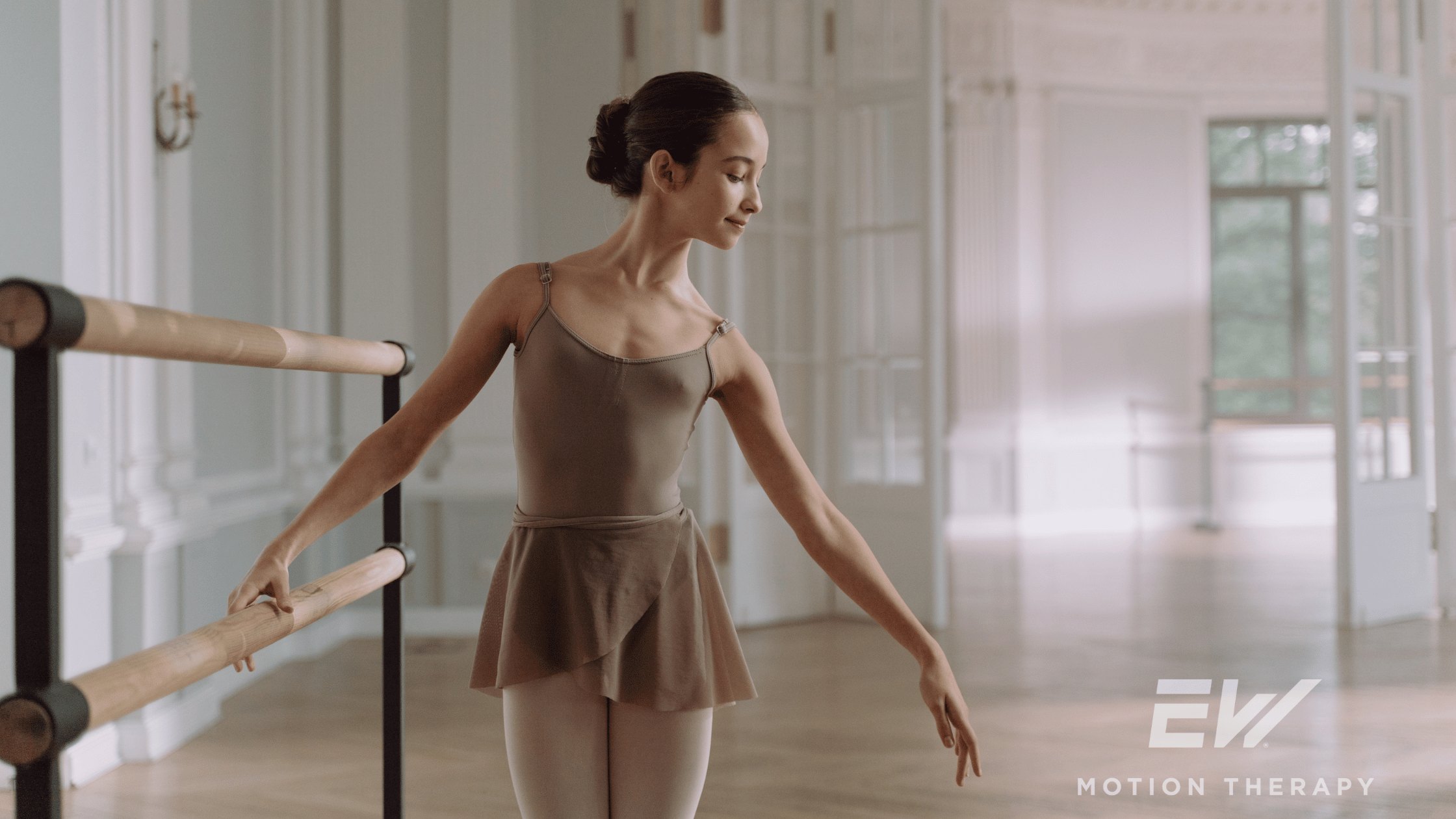Strength Training for Dancers: Benefits for Health and Performance

Licensed Physical Therapist, PT, DPT // EW Motion Therapy Trussville
Many workout programs include both cardio and strength training, with rest days in between. However, strength training is often overlooked in the dance community, with many dancers fearing it might lead to unwanted muscle bulk. However, strength training is crucial for dancers' overall health and performance, and no dancer should shy away from including it in their routine. We always encourage our dancers at EW Motion Therapy to incorporate strength training into their routine, and we help them do it through personalized programs that complement their training schedule. While you may decide that our dance program doesn’t fit your needs, this article will help you understand the importance of strength training for dancers. We address concerns about bulking and advise how dancers can effectively incorporate weight training into their schedules. Additionally, we will discuss how physical therapy and personal training can significantly optimize dancers' strength training routines.
The importance of strength training for dancers
Enhancing performance and reducing injury risk
Strength training is a fundamental aspect of athletic development for dancers, helping to improve performance and reduce the risk of injury. Dancers require a unique blend of strength, flexibility, and endurance to execute complex movements with precision and grace. Incorporating strength training into their routine helps build muscle endurance, power, and stability, which are essential for performing demanding choreography.
For example, a well-structured strength training program can enhance a dancer's ability to perform lifts, jumps, and quick direction changes by strengthening the core, legs, and upper body. Additionally, improved muscle strength supports joint stability, reducing the likelihood of injuries such as sprains, strains, and overuse injuries.
Supporting overall health and longevity
Beyond performance, strength training offers significant health benefits. It helps maintain bone density, which is particularly important for dancers at higher risk of osteoporosis due to the repetitive impact on their bones. Strength training also aids in maintaining a healthy metabolism, promoting better weight management and overall well-being.
Additionally, incorporating strength training into a dancer's routine can improve posture and alignment, contributing to better technique and reduced strain on the body. As dancers age, maintaining muscle strength becomes increasingly important to support longevity in their careers and overall quality of life.
Addressing the fear of "bulking"
Understanding muscle development
A common concern among dancers is the fear of "bulking up" and losing the lean, elongated physique often associated with dance. However, this fear is not based on biology. Several factors, including genetics, nutrition, and the type of training performed, influence muscle development and hypertrophy (an increase in muscle size).
Dancers typically engage in high-repetition, low-weight exercises that promote muscle endurance rather than hypertrophy. This type of training, combined with the demands of dance practice, ensures that muscle growth is balanced and functional, enhancing performance without excessive bulk. In other words, it’s rare to see a dancer looking like a bodybuilder because each athlete trains and eats differently. Plus, some bodybuilders use steroids to enhance muscle growth, which is a decision most dancers would not make.
The role of nutrition and training volume
Nutrition is one of the most essential factors in muscle development. A caloric surplus and high protein intake are required for significant muscle hypertrophy, or the “bulking up” process. Dancers who maintain a balanced diet that supports their energy needs with appropriate caloric intake are less likely to experience unwanted muscle growth. Also, the volume and intensity of strength training exercises can be adjusted to align with a dancer's goals. By focusing on functional strength and a regular, balanced diet, dancers can enhance their performance without compromising their desired aesthetic.
Incorporating strength training into a dancer's schedule
Creating a balanced routine
To effectively incorporate strength training into their schedules, dancers should aim for a balanced routine that complements their dance practice. The ACSM recommends strength training at least twice weekly; dancers are no exception. A well-rounded program includes exercises targeting major muscle groups, such as the core, legs, arms, and back, emphasizing functional movements that mimic dance-specific actions.
For example, squats, lunges, and planks can enhance lower body and core strength, while resistance band exercises can improve upper body stability and control. Combining bodyweight exercises and resistance training is essential to a comprehensive strength foundation.
Scheduling and progression
Dancers should include strength training sessions two to three times per week, allowing for adequate recovery between sessions. Each session should last 30 to 60 minutes, depending on the dancer's schedule and training intensity. Start with manageable weights and gradually increase the resistance as strength improves - this allows you to progress without increasing your risk of injury.
Incorporating various exercises and regularly changing the routine helps prevent plateaus and keeps the training fun. Additionally, dancers should listen to their bodies and adjust their strength training intensity based on their dance rehearsal and performance schedules to avoid overtraining and fatigue. This is where a personal trainer or physical therapist can come alongside a dancer to ensure a healthy strength training progression.
Physical therapy and personal training: safe, effective strength training
Personalized strength training programs
Physical therapy and personal training can benefit dancers by providing personalized strength training programs tailored to their needs and goals. Physical therapists and trainers with experience working with dancers understand the unique demands of the art form and can design exercises that enhance performance while minimizing the risk of injury.
For instance, a physical therapist can assess a dancer's movement patterns and identify areas of weakness or imbalance. They can then develop a targeted program to address these issues, improving overall technique and reducing the likelihood of injuries.
Injury prevention and rehabilitation
Physical therapists play a crucial role in injury prevention and rehabilitation. They can guide proper warm-up and cool-down routines and techniques for managing minor injuries and preventing them from becoming more severe. In the case of injury, a physical therapist can create a rehabilitation plan that includes strength training exercises to facilitate recovery and ensure a safe return to dance.
Personal trainers can also assist dancers in setting realistic fitness goals and maintaining motivation. They can provide ongoing support and adjustments to the training program, ensuring that the dancer continues progressing and achieving their desired outcomes.
Strength training is essential to a dancer's overall fitness regimen, offering numerous benefits for performance, health, and injury prevention. While it is normal for a dancer to worry about “bulking up,” as we’ve discussed, nutrition and genetics influence that process more than strength training ever could. By incorporating a balanced strength training routine into their schedules, dancers can enhance their strength, endurance, and overall well-being.
Physical therapy and personal training can provide valuable support in creating personalized programs and ensuring safe, practical training. Through strength training and other customized interventions, we empower our dancers at EW Motion Therapy to reach their full potential and enjoy long, healthy careers. To learn more about what physical therapy might look like for your dance goals, click the button below to download our answers to 20 frequently asked questions.


